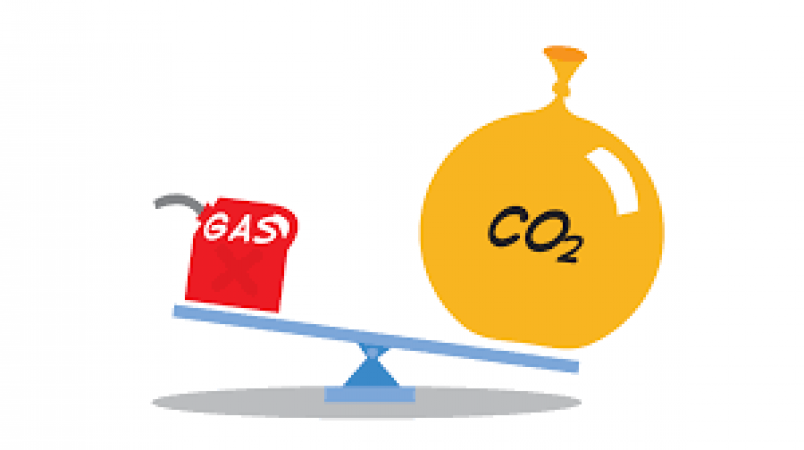
In recent times, the loss of carbon dioxide (CO2) has gained significant attention as a critical environmental concern. CO2, a greenhouse gas, plays a pivotal role in the Earth's climate balance. However, due to various human activities and natural processes, the balance has been disrupted, resulting in the loss of carbon dioxide and its subsequent consequences. In this article, we delve into the causes, effects, and potential solutions to address the loss of carbon dioxide.
The Role of Carbon Dioxide in the Environment
Carbon dioxide is an essential component of Earth's atmosphere, playing a crucial role in regulating the planet's temperature. It acts as a natural insulator, trapping heat from the sun and preventing it from escaping back into space. This phenomenon, known as the greenhouse effect, maintains a suitable climate for life on Earth.
Causes of Carbon Dioxide Loss
Several factors contribute to the loss of carbon dioxide. Deforestation, land-use changes, and the burning of fossil fuels are major culprits. Deforestation reduces the number of trees that absorb CO2, while fossil fuel combustion releases vast amounts of stored carbon back into the atmosphere.
Effects of Decreased Carbon Dioxide Levels
Decreased carbon dioxide levels can lead to a range of environmental issues. One of the most significant concerns is a disruption in the delicate balance of Earth's climate systems. This disruption can cause unpredictable weather patterns, more frequent and severe heatwaves, and shifts in precipitation patterns.
Implications for Ecosystems and Biodiversity
Loss of carbon dioxide impacts ecosystems and biodiversity. Many plant species rely on CO2 for photosynthesis, their primary source of energy. Lower CO2 levels can hinder plant growth, potentially leading to reduced food sources for animals and disruptions in food chains.
Human Activities and Carbon Dioxide Loss
Human activities, such as burning fossil fuels for energy, contribute substantially to carbon dioxide loss. The excessive use of cars, industries, and power plants release immense amounts of CO2 into the atmosphere, surpassing the natural capacity of the environment to absorb it.
The Paradox of Deforestation
Deforestation, driven by urbanization and agriculture, intensifies carbon dioxide loss. Trees that are cut down or burned release stored carbon into the atmosphere, and the removal of these natural carbon sinks reduces the Earth's capacity to absorb CO2.
Carbon Capture and Utilization Technologies
To combat carbon dioxide loss, innovative technologies are being developed to capture and utilize CO2. Carbon capture and utilization methods involve capturing CO2 emissions from industrial processes and power plants and converting them into valuable products or storing them safely underground.
Natural Carbon Dioxide Sources
While human activities are a significant contributor to CO2 loss, natural sources like volcanic activity and wildfires also release carbon dioxide into the atmosphere. These sources, though natural, can contribute to the overall imbalance in CO2 levels.
Balancing Carbon Dioxide Levels: A Global Challenge
Balancing carbon dioxide levels requires a global effort. International cooperation, policy changes, and the transition to renewable energy sources are crucial steps in mitigating CO2 loss and its consequences.
Renewable Energy and Carbon Emission Reduction
Shifting towards renewable energy sources, such as solar, wind, and hydroelectric power, is essential to reduce carbon emissions. These sources produce little to no CO2 during energy generation, helping to combat the loss of carbon dioxide.
The Role of Oceans in Carbon Dioxide Absorption
Oceans act as significant carbon sinks by absorbing CO2 from the atmosphere. However, this leads to ocean acidification, which poses a threat to marine life and ecosystems. Striking a balance is vital to maintain a healthy marine environment.
Addressing Agricultural Contributions to CO2 Loss
Agriculture also contributes to carbon dioxide loss through practices like excessive plowing and overuse of synthetic fertilizers. Implementing sustainable agricultural methods can help retain carbon in the soil and reduce CO2 emissions.
Preserving Forests for Carbon Sequestration
Preserving existing forests and reforesting areas that have been cleared can significantly contribute to carbon sequestration. Forests play a crucial role in absorbing carbon dioxide and helping to restore balance to the atmosphere.
The Importance of International Cooperation
Solving the issue of carbon dioxide loss requires international cooperation and agreements. Nations must come together to set emissions reduction targets, share technologies, and work collectively towards a sustainable future. The loss of carbon dioxide poses a severe threat to our environment and climate system. Human activities have disrupted the natural balance of CO2 levels, resulting in far-reaching consequences for ecosystems, weather patterns, and biodiversity. To address this challenge, we must adopt sustainable practices, transition to renewable energy, and work collaboratively on a global scale. By doing so, we can mitigate the loss of carbon dioxide and secure a healthier, more stable future for our planet.
Driving Excellence: A Comprehensive Review of the WagonR